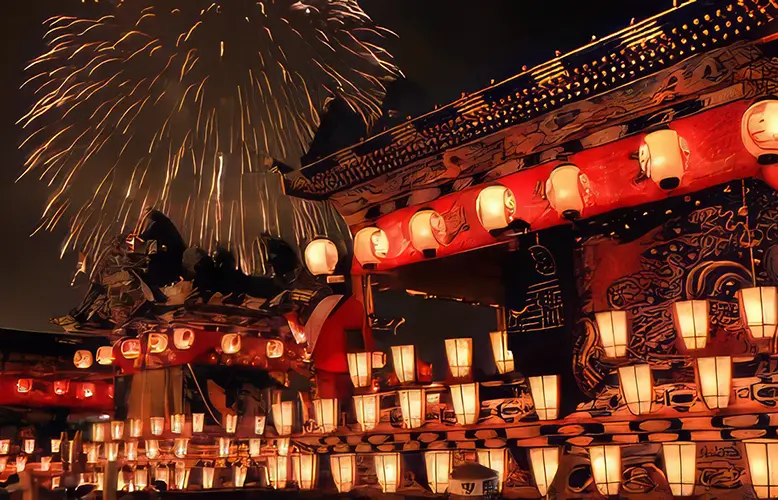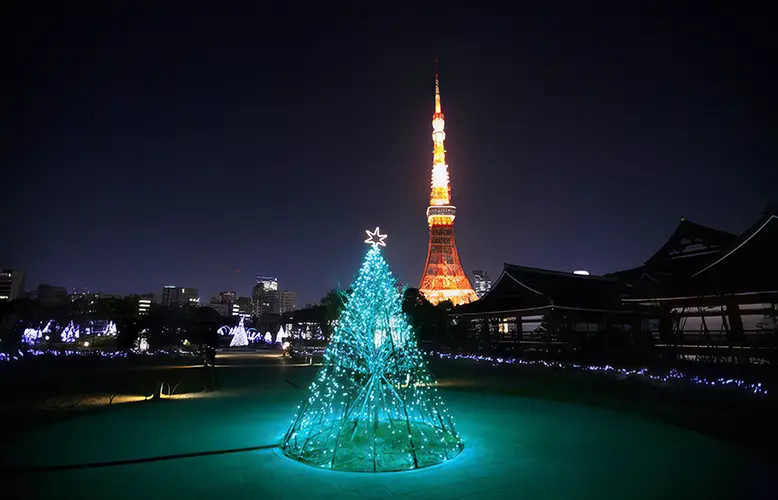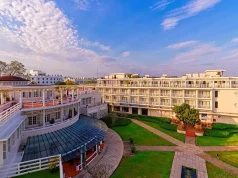December is one of the most beautiful and festive times of the year across much of the globe, and Japan is no exception. The holiday season in Japan marks a time of celebration, cuisine and spiritual renewal. It also represents one of the best windows to visit Japan for travelers seeking to experience the many rich (and often tasty!) cultural traditions that make the country so compelling to visit in the winter.
When the neon lights of Japan’s big cities start to give way to the familiar white, green, and red lights of the holidays, the festive season is in full swing. Small towns across the countryside come alive with vibrant festivals, bringing entire communities together. Below, we explore some of the specific festivities and attractions you’ll want to seek out on your holiday trip to Japan, as well as exciting news from Air Canada that will make the destination more accessible than ever this winter.
Holiday Matsuri

The holiday season in Japan is a season of festivals. Each prefecture across Japan boasts its own festivities, such as Saitama prefecture’s Chichibu Night Festival, one of Japan’s most popular festivals which feature floats. Beyond the parade route are streets lined with festive food stands and amazake (sweet rice wine) that indulge revellers during a two-and-a-half-hour fireworks extravaganza. Osaka’s Iwatsuta Shrine Fire Festival is an awesome display of 108 bundles of wood ignited while young men run through the flames to purify themselves. In reference to a local fishing legend, three men are assigned to carry a costumed sea god through a bonfire, shouting “ Yassai, hossai.”
Warm Winter Cuisine

The winter holiday window just might be the best time of the year to eat in Japan! Seafood is always fattier and tastier in the colder months, which is also when hot pots come out for the heartiest comfort food of the year. In addition to ramen and local broths that include pine mushrooms and mountain vegetables, Nabe—Japanese hot pots—include Sukiyaki (meat and vegetables, slowly cooked or simmered in a pot at the table) and Shabu Shabu (thinly sliced meat and vegetables that are boiled at the table and served with dipping sauces.)
Dreaming of a Japanese Christmas

All the traditional elements of Christmas are on full display as cities and towns alight with decorations. Illuminations abound. Kobe’s Luminarie is an astonishing construction of more than 200,000 hand-painted tiny bulbs donated by the Italian government to lift spirits following the 1995 earthquake. In Nagasaki, The Kingdom of Lights is an extraordinary showcase of 13 million lights, an LED waterfall, an illuminated canal cruise, and events that combine light with flowers and music.
Ringing in the New Year

The New Year, o shogatsu, is an important national holiday. It begins with omisoka on December 31, when the Japanese observe the Shinto custom of finishing oosouji, a big clean-up of their homes and shops to welcome the gods. Families eat soba (‘year-crossing’ buckwheat noodles) to symbolize their hope for a life that stretches as long as their noodles. At midnight on New Year’s Eve, Buddhist temples across Japan ring their bonsho (temple bells) 108 times to represent the 108 worldly desires we experience in life. By the final bell, all are cleansed of their problems of the passing year and are free to start anew.





